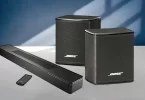There are many confusing terminologies when we talk about power tools and DIY projects. Sometimes these power tools have the same usages and functionalities but with a few differences. Therefore, you must know about them and your work requirements thoroughly.
Jigsaw and Sabre saw (also spelled as ‘saber’) are also considered in such machines, which have slight differences, and most of you out there do not know what would work best for your rigorous tasks. Both of them are portable handy electric saws with thin blades.
In this jigsaw vs saber saw review, we will explore what these two power tools are capable of doing and explore their fundamental differences.
Saber Saw – An Introduction
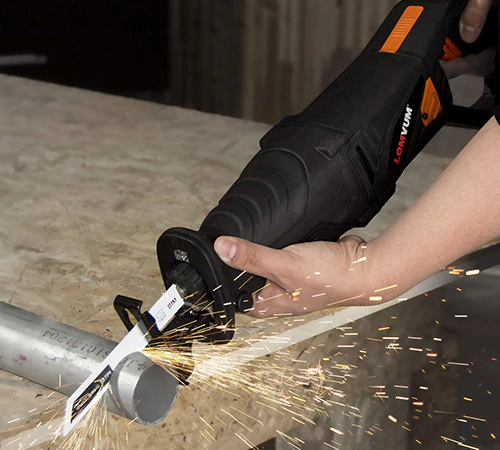

Saber saw is considered as one of the types of reciprocating saw. It moves in the push and pull manner and is cut through wood and other soft materials. The term saber saw is becoming obsolete now, and this machine comes under the umbrella term of reciprocating saws.
The saber saw is designed in a sword shape with a handle to grip. It gives you the leverage of changing the blades as per your requirements. However, a saber saw cannot be considered reliable for working on challenging and rough textures.
It is designed for soft surfaces; however, it can also be used for general woodworking. Unfortunately, it does not possess a powerful motor which is a primary hindrance to its efficiency.
Read: Difference Between Reciprocating Saw and Sabre Saw
Jigsaw – Most Common Term in Power Tool World
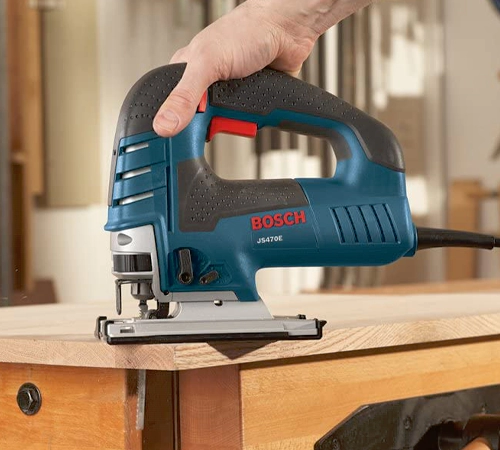

A jigsaw is a powerful machine that is quite versatile. It curtails the electric motor and the features of the reciprocating saw. As a result, the jigsaw can cut surfaces with sheer precision, and it is the most favored choice among power tools.
Jigsaw can cut the surfaces straight and in curves as well. It is a contemporary invention. It is crafted with modern technology, and its blades are interchangeable, which helps in cutting several materials in versatile dimensions.
Jigsaw & Saber Saw | Little Preview of the History
The difference between the two tools can only be obtained if we look at their invention history. In some regions, both of these tools are considered the same, except having different names. So, what distinguishes these two machines?
Let’s dig into the history, which dates back to the 1800s. These two tools were invented in different countries and were referred to as the same machines. This distinction still prevails, but with time, many other different features are added to these tools.
Jigsaw and saber saws are mainly handy electric saws with thin blades that are utilized to pierce through scrolls and other shaped stocks. Owing to their similarity in this feature, some companies have added to the confusion by a new term, ‘Saber Jigsaw.’
After some repeated modifications and revisions in the jigsaw technology, the altered jigsaw was used for scrolling and cutting nonlinear surfaces. The modified version was then called the ‘scroll saws’ owing to their functions of cutting scrolls.
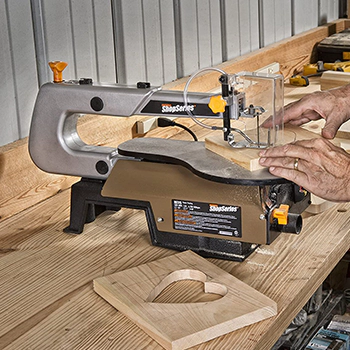

After some more innovations, in the late 1940s, the jigsaws were manufactured as portable devices and renamed the Lest jigsaw. However, after continuous revisions, the devices with various added features were termed under the umbrella category, known as ‘Jigsaw.’
The jigsaws were again modified with time, and the latest technology called for the interchangeable blades within one device. They were designed to cut the rough surfaces and pierce through the steel and were named the ‘saber blade.’
Having mentioned all the information above about the basic history of both these tools, we will now move to the added features which distinguish the saber saw from the jigsaw. And it is the most exciting part of our jigsaw vs sabre saw review.
Applications of Jigsaw vs Sabre Saw
Functionality of Jigsaw
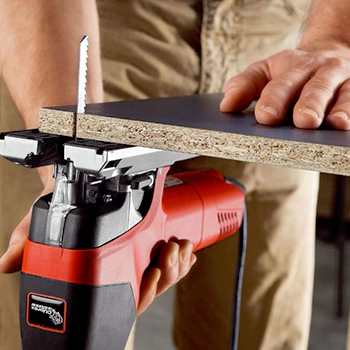

Jigsaws are highly functional and convenient to use. They can cut through the curves in the wood. Moreover, the jigsaw is something that every woodworker should have in the tool kits. It is efficient in usage and is swift in working.
These machines cut the surfaces with sheer precision and accuracy. You can angle them up to 45 degrees, and you won’t be needing the circular saw for accurate cuts when you have a jigsaw. The usage of the jigsaw is highly commendable in woodworkers’ workshops.
Applications of Saber Saw
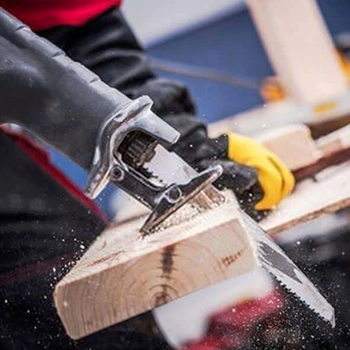

Saber saw is commonly used for soft-textured surfaces. You have to keep the material and stock in mind before choosing between a saber saw or a jigsaw. The saber saw gives a good finish, but if you need precision cutting in budget, you should consider the usage of the jigsaw.
The saber saw comes in the category of reciprocating saw. It moves in the push and pull motion and can access surfaces that are hard to reach. Furthermore, you can fix the pruning blade to the saber saw, which can be used for gardening purposes.
It has the potential to cut the excessive shrubs, twigs, and trees. This feature spares you from the pain of laborious manual work. You do not have to use an axe when you have the saber saw at hand. In addition, it comes at affordable prices, which makes it a favorable option.
FAQ’s
Q1: Is a Saber saw the same as a jigsaw?
Ans: The saber saw is a hand-held electric-powered device. It is comparatively more significant than a jigsaw, but it cannot cut with precision like a jigsaw.
Q2: Which one is better, a jigsaw or a Saber saw?
Ans: Jigsaw is quite convenient to use, and it cuts with sheer precision. Moreover, it can also be used on rough and complex textures. While Saber saw only can cut soft stocks and general woodworking.
Q3: Are jigsaws worth purchasing?
Ans: Jigsaws are versatile tools that can cut curves with the right blade. In addition, they come in different sizes and shapes to fit your needs, so these features make jigsaws worth the buy.
Q4: How do Saber saws work?
Ans: Sabre saws are commonly used to make cuts in wood. They resemble reciprocating saws but have an upward and downward moving blade that gives it its name ‘Sabre Saw.’
Q5: What are the potential uses of the Saber saw?
Ans: The saber saw is a portable, cordless tool that makes precision cuts up close with its jigsaw-like blade. This machine can cut through wood quickly and easily with sheer effectiveness.
Final Word
Nowadays, the concept of a saber saw is becoming obsolete, and the jigsaws available in the market are packed with the features of a saber saw. Before buying any saw, check on its durability, its capability to cut the material, the power, etc.
Also, it should be noted that the saber saw comes under the category of a reciprocating saw, and the term saber is now out of the picture. Therefore, you need to be very cautious in its applications, whether you choose a jigsaw or a reciprocating saw.
Be careful with your procedure and ease your work by choosing the saw that best suits your needs.





